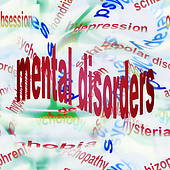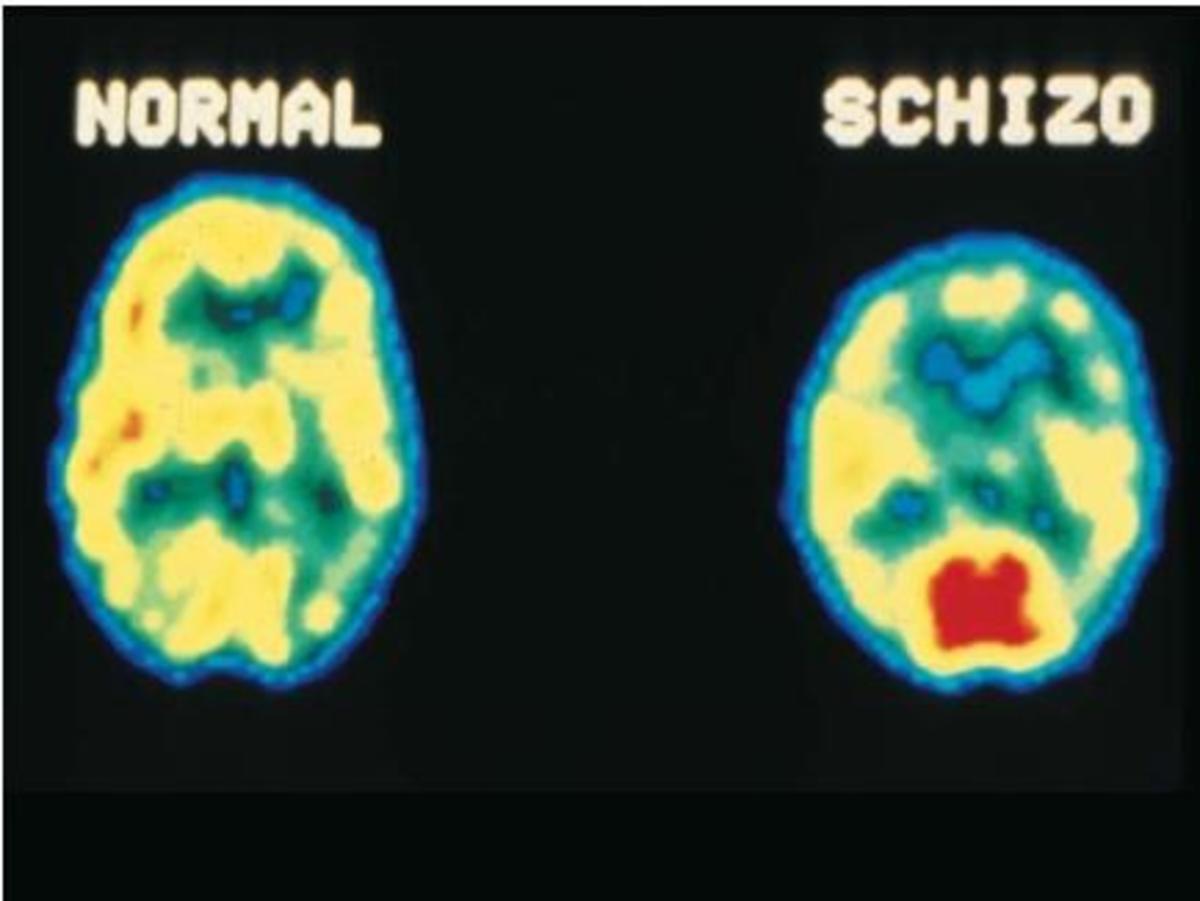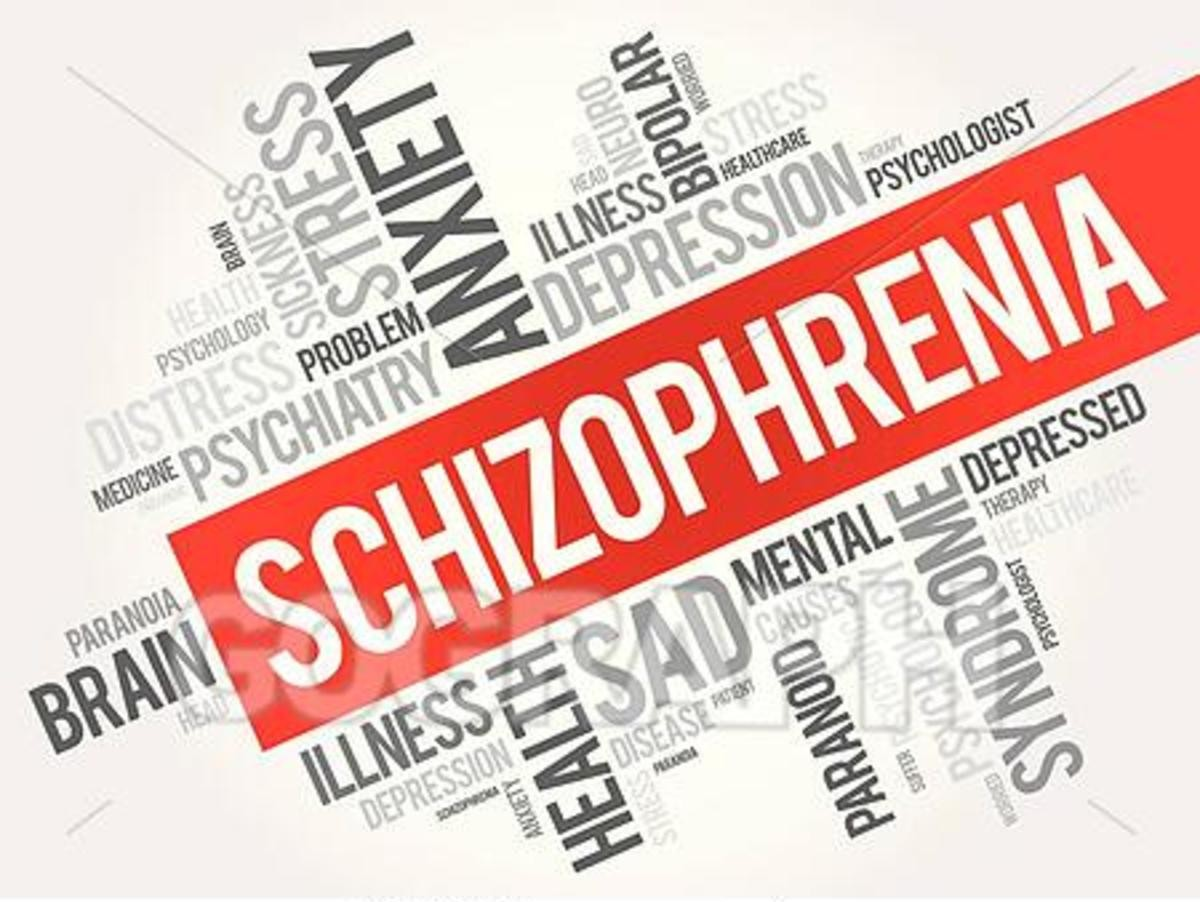Schizophrenia. Its probable causes and tentative treatments.

Schizophrenia
Its probable causes and tentative treatments.
There are many types of emotional illness as a result of social pressures, ignorant religious teachings, and social stigma caused by unfounded guilt, fear and hatred.
Schizophrenia is by far the most common of all mental disorders. It has been estimated that 80% of all neuro psychiatric hospital beds are occupied by patients diagnosed as Schizophrenic. The word "Schizophrenic" is derived from the Greek words: schezin (to split) and phren (mind). This does not mean that the patient has multiple personalities, but rather it is a splitting of the thought process from emotions. The patient's intelligence my remain normal, but the emotions do not fit real life situations.
One example of this disorder is a blunting or dulling of emotional expression, or the display of an emotion that is inappropriate of the situation, or the thought, being expressed.
Schizophrenic patients may be emotionally disturbed, aggressive, and destructive. They may return to childish behavior and become unable to care for themselves. Some withdraw into fantasy and hallucination. Most have serious difficulty in adjusting to reality.
In general, doctors can rarely prevent or cure this disorder, but can often help the patient to adequately adjust to a somewhat "normal" life.
Different forms of Schizophrenia
Schizophrenia occurs in several forms and is the most frequently diagnosed mental disorder found among patients in mental hospitals. Schizophrenia affects both male and female.
1. In catatonic schizophrenia a person may become completely inactive and immobile, and not seem to react or respond to reality at all. His muscles become rigid and he may stay in one position for hours at a time without moving, or seeming not to know anything that goes on around him. On the other hand, he may become wildly excited and behave in violent and strange ways.
2. In hebephrenic schizophrenia a person acts and talks in an irrational manner, and may behave childishly. These patients suffer rapid mental deterioration and must remain in mental institutions all their lives.
3. The paranoid schizophrenic believes that everyone is against him, or out to persecute him, and reacts accordingly.
4. In simple schizophrenia this person is emotionally dull, withdrawn, and isolated. He shows no strange or bizarre symptoms and goes along for some time before his illness is detected. His emotions slowly disappear.
Symptoms
The symptoms of schizophrenia are so many and varied that perhaps the term is improperly being used to cover more than this one type of mental disorder.
Primary symptoms can be summarized as follows, but not every schizophrenic will show all these symptoms.
1. Disturbance of effect: This means not showing emotions in a normal way, usually appearing dull and apathetic or displaying inappropriate emotions. For example, speaking of tragic events without any emotion or while actually smiling.
2. Autism: The withdrawal from real life into an inner fantasy world. Inappropriate emotional behavior can sometimes be explained by the fact that the patient may be reacting to what is going on in his private world rather than to external events. He may be so enmeshed in his fantasy that he is disoriented in time and space.
3. Withdrawal from active interchange with the realistic environment: The loss of all interest in people and events around him. In extreme cases he may remain silent and immobile for days and must be cared for as an infant.
4. Delusions and hallucinations: The most common delusion experienced are the beliefs that external forces are trying to control his thoughts and actions or that certain people or groups are persecuting him. Hearing voices or auditory hallucinations are more common than visual hallucinations. When persecutory delusions are predominant, the patient is classed as a paranoid schizophrenic.
5. Bizarre behavior: This behavior may include peculiar gestures, movements, and repetitive acts that make no sense to the observer but are closely related to the schizophrenic's fantasy world.
6. Disturbance of thought: His speech is frequently incoherent and disconnected. He makes associations that seem senseless and often coins new words to express his peculiar thoughts. When the disorder is long standing there is progressive deterioration of intellectual ability as measured by standard intelligence tests. This exemplifies heberephrenic schizophrenia.
Classifications
Doctors classify mental illnesses into two general types: organic and functional.
1. Organic mental illnesses result from defects that occur in the brain before birth, or when injury or illness cause damage to the brain.
2. Functional mental illness involves no apparent change in the brain, yet the mind does not work properly.
Most mental illnesses are functional rather than organic. Arguments over organic or functional causes of behavior disorders still surround schizophrenia. The fact that schizophrenia is classified as a functional psychosis does not mean that it will necessarily remain in that category.
Research on schizophrenia can be classed into three groups, each having a different point of view about cause.
1. The first group shows good evidence in favor of a heredity factor in schizophrenia as shown by the multiple studies of twins taken place since 1928. If a schizophrenic has a monozygotic, or identical, same sex, twin developed from a single egg, the probability is 46 % that his twin will also become schizophrenic. Even if the twin is not diagnosed as schizophrenic there is high probability that he will be abnormal in certain aspects. A review of a number of studies suggests that only about 13 % of the monozygotic twins of schizophrenics can be regarded as normal, or nearly normal. The child of a schizophrenic has a 49 % chance of being schizophrenic and if both parents are schizophrenic the possibility increases to 66 %. Although strong evidence favors a hereditary factor in the causes of schizophrenia, there is no clear idea how this susceptibility is transmitted.
2. Those of the second group promoting a functional theory believe that early child care practices and interpersonal relationships in the home are crucial variables in schizophrenia. They have looked for factors in the parent-child relationship, particularly the relationship with the mother, that would account for the social withdrawal, poor reality contact, and insecurity characteristic of the schizophrenic. Mothers of schizophrenics have been found to be both overly involved and neglectful, over protective and rejectful, too restrictive and too permissive. Fathers of schizophrenics have tended to be characterized as weak and ineffectual, or aloof and uninvolved with their children.
However, it is not clear whether the behavior of the parents does actually differ from that of other parents. It is difficult to determine whether the parents' attitudes caused the schizophrenia or whether the child was deviant to begin with and the parents' behavior was in response to this abnormality.
Also it is indicated that the disruption of the home by the death of one or both parents occurs more frequently in the background of schizophrenics than in that of normal individuals. Also more prevalent in their backgrounds, are some environments in which there is intense conflict, with both parents trying to dominate and
3. This third group is concerned with the study of internal chemistry in relation to psychosis. It has revealed evidence that manic-depressive and schizophrenic patients differ measurably in blood chemistry from each other as well as from normal individuals. The interpretation of such differences requires great caution, however; they may be a result of the psychosis rather than a cause of it. It is reasonable to assume that a psychosis, through disruption of normal activity and interference with nutrition and sleep, might have extensive effects on the body chemistry.
Therapy
Because schizophrenia is such a common, tragic, long lasting, and crippling disorder, research into its causes has been pursued vigorously. As yet, nobody has proven conclusively any one cause of schizophrenia. In the absence of firm knowledge of the causes of schizophrenia, a wide variety of treatments have been proposed. The trend in therapy, or treatment of schizophrenia, is increasingly stressing the psychological, rather than medical methods of treatment. The trend is also toward the prevention of severe disorders through the treatment of the mildly ill, and more readily treated, individuals.
Therapy for schizophrenia, as well as other mental illness, is of two kinds: medical therapy and psychotherapy.
1. Medical therapies consist of psycho-surgery, shock therapy, narcosis, and chemo-therapies.
Psycho-surgery is surgery of the brain for the purpose of treating and relieving mental and behavioral symptoms. The most common form of this surgery involved the pre-frontal lobes of the brain. By the removal of tissue from these frontal lobes (lobectomy), or the severing of the connections between the frontal lobes and the lower area of the brain (lobotomy), it was thought that the individual would be less concerned and worried about future events. Because this method was of little therapeutic value and dangerous to the individual, it is not used today.
Shock treatment includes several different kinds of therapy which put the patient into an unconscious state for a time. In most cases, this state is preceded by convulsions, similar to epileptic convulsions. No one is quite sure why, or how, this treatment works. All that is known is that some patients are improved after a series of shock treatments. The shocks are administered by either electric impulses to the brain or via chemical induction.
Narcosis is the use of narcotic drugs to put a person to sleep. It was used extensively to keep agitated patients under control. By itself, it has no therapeutic value, other than the use of Sodium Amytal, or the "truth serum", which enables a patient to remember things otherwise deeply buried in his subconscious.
Chemotherapy is the use of tranquilizers to reduce symptoms, thus making it possible for others to deal with the patient rationally. They treat only the symptoms, not the illness.
Of the first two medical therapies, electroshock treatments are now most widely used.
Narcosis and chemotherapy are employed more to make the patient available to psychotherapy than to produce long lasting beneficial results.
2. Psychotherapy is the treatment of a disease by mental influences. The aims of this therapy consist of some combination of: changes in life situations, providing mental support through a crisis, achieving insight, and learning to replace bad social conduct with that which is more socially acceptable.
Four major types of psychotherapy may be distinguished: directive therapies, client centered therapy, psychoanalysis, and behavior therapies:
1. Directive therapy emphasizes changing the situation and re-education of the individual.
2. Client centered therapy provides a permissive situation for the patient, and attempts to help him talk out and solve his personal problems.
3. Psychoanalysis follows the teachings of Freud. As a therapy, psychoanalysis emphasizes the analysis of free associations, resistance, dreams, and transference's, or the transfer of attitudes from one person to another.
4. The behavior therapies concentrate on the deviant behavior as such and attempt to modify it by use of conditioning and learning techniques.
Recovery from all religious brainwashing to peace of mind
- How not to Be Pavlov's Dog | Psychology Today
“I couldn’t help it. I can resist everything except temptation” (Oscar Wilde). “Those who restrain desire do so because theirs is weak enough to be restrained” (William Blake). What do we know about individual differences in resisting temptation?
- THE FEAR IN OUR HEARTS
The exploitation of our Creator for profit has gone unchallenged for far too long. This is a sin against our Creator and a sin against humanity itself. I am neither a prophet, nor a seer; nor do i...
Effectiveness of treatments and Prevention
Studies of the effectiveness of psycho-therapeutic techniques are very difficult to do, but those which have been done may be interpreted as indicating that psychotherapy is far less effective than we would like it to be.
One implication of this, is that prevention of behavior disorders must assume greater importance.
Normal individuals may do much to improve their own personal adjustments by attempting to achieve self understanding and learning various measures to reduce conflict and frustration.
Self understanding is aided by learning to accept and tolerate anxiety, avoiding the excessive use of defense mechanisms, and attempting to understand one's own motives.
Conflict and frustration may be minimized by postponing certain satisfactions to a foreseeable time, acquiring greater frustration tolerance, finding socially acceptable ways of venting emotions, and keeping occupied with useful work.
Mental health is a problem that concerns everyone. So many people are, have been, or will be, mentally ill or seriously maladjusted that none of us can escape some personal contact with it. Therefore, it is felt that everyone should have some understanding of what mental illness is, its probable causes, detection of symptoms, and available treatments of it.
With all the hypotheses about causes, and treatments, no one has dared to approach one of the most probable causes in all walks of life. It is a logical conclusion from first hand observations and study, that 90 % [+/-] of all mental disorders are directly related to the bombardment of incongruent and inconscient (unsuitable, mindless, thoughtless, irrelevant, illogical) religious indoctrination techniques on a child's developing psyche. The subconscious damage done by these "teachings" is indisputable and irreversible and most of all, inexcusable.
Among those tentative cures cited heretofore in this article, there should be one more added and that is 'deprogramming'. The reversal of brainwashing techniques that children are subjected to every day of their lives from the time they are born until they escape the confines of influence by their parents, and religious leaders.
After many years of working with the mentally ill, i found that greater than 90 % of those in hospitals and later outpatient treatment programs were "hung up" on sexual, or religious related guilt, extreme low self image, low self worth, low self esteem, etc, to such a degraded level that they were non functional in a 'normal' society.
Although, it must also be noted here that while most people subjected to religious indoctrination's do manage to function at a so called "acceptable" level in society, they still retain suppressed feelings of low esteem, guilt (without reason) and intense fear of eternal pain and suffering without any realistic justification.
Those children with higher conceptual abilities are the ones most damaged by the "tearing down" of a child's mind by the demeaning of their spirit through the innocuous brainwashing techniques used by all religions' unique indoctrination processes into their respective religious cults, sects, or denominations. Bombarding a child's mind with superstitious fears before they reach the age of reasoning is inappropriate and should be considered child abuse.
Those children that 'learn' to conform, can never break free of those chains around their minds. Until this cycle of emotional child abuse is dealt with on a universal scale, we will continue to have inner conflict, turmoil and an unnecessary part of our society suffering from mild to severe mental disorders filled with hatred and fear.
The first line of defense against this monstrous cycle of abuse are the parents.
I personally am not an atheist, but whether you are, or not, is irrelevant. The video i have attached is applicable to all who have children, or plan on having children in the future. It should be a required viewing for all parents.
The parents are the only ones responsible for the healthy development of their children, both in mind and body.
by d.william
Does Religious Child Abuse Directly Contribute to Mental Disorders?
© 2011 d.william








